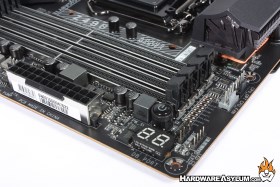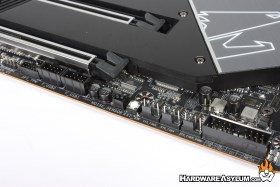Aorus Z490 Master Motherboard Review
Author: Dennis GarciaBoard Layout and Features Continued
Dual channel memory comes standard on the Comet Lake processor and the Z490 Aorus Master supports standard speed DDR4 modules up to and beyond 5000Mhz. Actual speeds will depend on your module choice and processor quality but, be humbled the board can handle it. A maximum of 128GB is addressable with the proper module density.
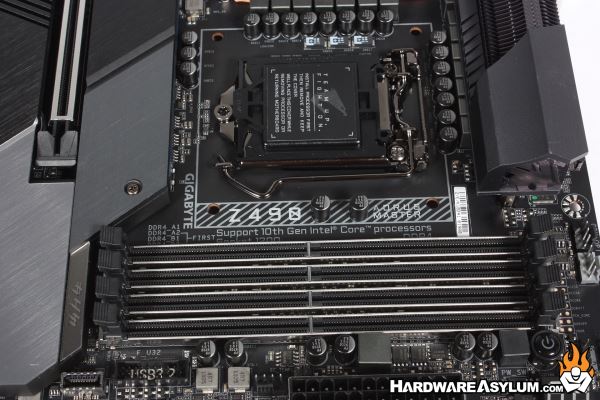
Just about every socket on the Z490 Aorus Master is metal reinforced with direct solder connections to the PCB for the maximum strength. In addition to twisting and pulling the DIMM sockets also have a crush bar to keep the socket sides from being pushed inwards. These details are very impressive and we can thank consumers for trying to RMA motherboards with socket damage for their prevalence on current designs.
Below the memory sockets you’ll find the onboard bench controls including a power button, voltage test points and a debug LED. Two of the four RGB headers are also located here for both RGB and ARGB.
You’ll find the reset button at the bottom of the motherboard in white AND squished between a noise sensor jumper and the System Fan 3 header.
Be warned, you will poke your finger.
Internal SATA connections number six and follow the new SATA6 connection standard. If you happen to use any of the onboard M.2 slots be warned that some of these SATA ports will be disabled. RAID levels 0, 1, 5 and 10 are supported using the setup wizard in the UEFI BIOS.
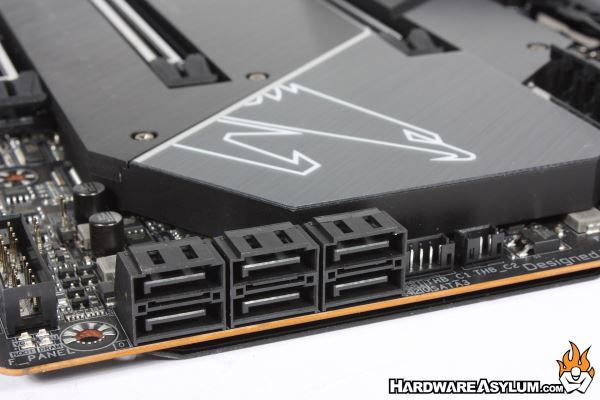
You will find a total of 3x M.2 slots on the Z490 Aorus Master motherboard all hidden under aluminum heatsinks. Incidentally, removing the top M.2 heatsink also exposes the center most mounting screw hole which can be a little frustrating when both installing and removing the motherboard.
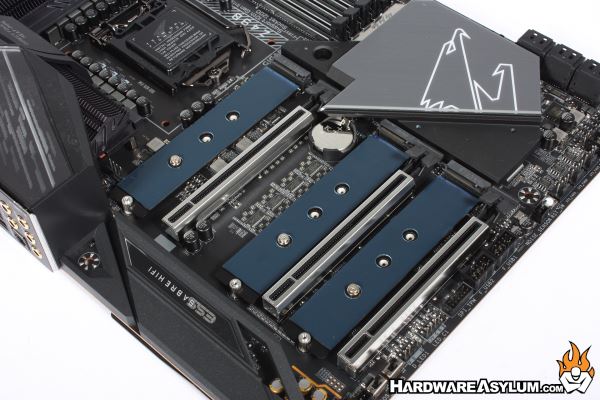
The top and bottom M.2 slots are using bandwidth allocated from the chipset while the center slot is connected to the CPU. It doesn’t matter which slot you pick unless you are running a mix of M.2 and SATA based drives.

